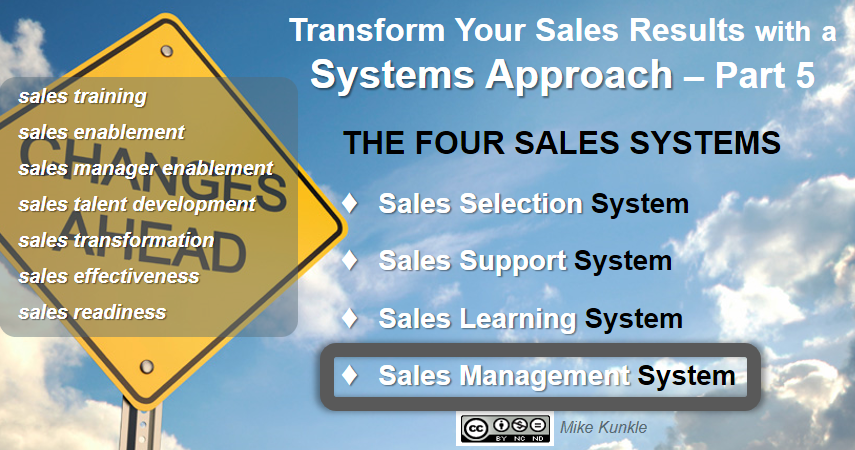
In this 5-part series of blogs, he speaks to how sales managers and sales professionals should be viewing and implementing the 4 sales systems. Here’s Part 5:
In Part 2 of the series, I detailed the Sales Selection System.
In Part 3 of the series, I shared the Sales Support System.
In this Part 4 post, I shared the details of the Sales Learning System, which is a subset of the Sales Support System.
In this final post, I will discuss the system that is critical to the execution, sustainment, and success of all the others – the Sales Management System.

Look at the components in this system, compared to the others. Note the larger number of components and the complexity involved. When you look closely, it becomes clear why the frontline sales manager role is one of the most challenging in corporations today.
Sales Selection (hiring) is its own system, detailed in Part 2 of this series. The science and processes behind this system provide potential for great success. That potential will only be realized if the system is executed well, consistently. The Frontline Sales Managers (FSMs or FLSMs, I’ll use the latter) are the enabler or barrier to success for this system, which is why it’s included here, in the Sales Management System.
- To be clear, managers are only peripherally involved in the creation of the system. Their feedback can be very helpful when creating job profiles, determining competencies and traits, and creating situations/case studies for testing hypothetical judgment or skill validations and simulations. At the same time, manager opinions and gut-feel should not override the science you are trying to implement or anything that is based on research and data vs. experience.
Read the continuation of this 5 part blog series here.






